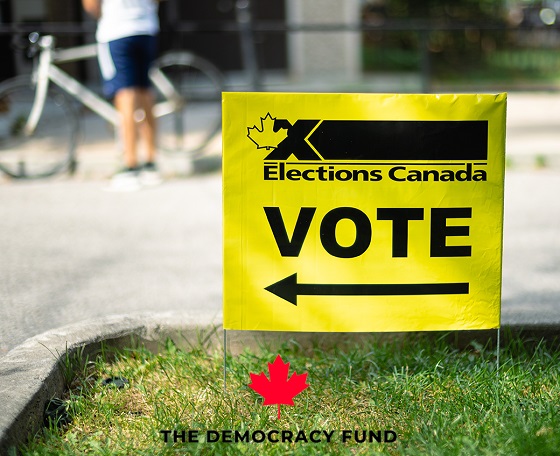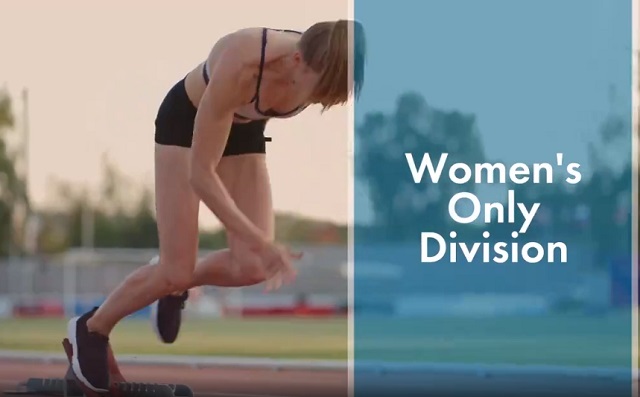Alberta
TDF expresses concern over Election Canada’s new mis/disinformation policy

From The Democracy Fund

Written by TDF’s Legal Team
The Democracy Fund sends a letter to Elections Canada and Minister LeBlanc.
Elections Canada has recently developed a policy to monitor and dissuade the publication of “misinformation” and “disinformation.”
In January 2024, it launched its ElectoFacts website to provide “correct information about elections that Canadians can easily access.” Elections Canada claims that it does not intend to establish Elections Canada as “the arbiter of truth” that will actively monitor the accuracy of statements and information distributed by parties and candidates.
However, The Democracy Fund (TDF) fears that the ambiguous language and the apparent lack of legislative authority to engage in such an endeavour will lead to an expansion of the program. Elections Canada has also contacted social media companies to remove “inaccurate” information: this is troubling because it is arguably an infringement of free speech rights, and there appears to be no judicial oversight of this censorship.
Canadians have the right to criticize their government and its processes – even if this criticism is wrong, inapt, trivial, unfair or unjustified. Efforts by the Western governments to constrain criticism using fashionable terms such as “misinformation” or “disinformation” are just state censorship rebranded for modern audiences.
TDF outlined its concerns in a letter to the Office of the Chief Electoral Officer and the Minister of Public Safety, Democratic Institutions and Intergovernmental Affairs, Dominic LeBlanc.
Our letter is attached below.
February 9, 2024
via email
Stéphane Perrault
Acting Chief Electoral Officer
Office of the Chief Electoral Officer
Elections Canada
30 Victoria Street
Gatineau, Quebec
K1A 0M6
Dear Mr. Perrault,
Re: Elections Canada Misinformation/Disinformation Monitoring
We are a civil society organization and registered charity that defends and promotes civil liberties in Canada. We are writing to express our concerns regarding comments around election “misinformation” and “disinformation” on the Elections Integrity and 1 ElectoFacts website.2
On its Election Integrity website, under “Disinformation or Influence Campaign,” Elections Canada outlines several types of objectionable conduct, namely:
- Elections Canada: Influence campaigns aimed at discrediting parts of the electoral process.
- Political Parties/Candidates: Social media campaign to spread false information about a candidate.
- Electors: Foreign online campaign aimed at specific diaspora communities to influence their vote.
In addition, Elections Canada purports to monitor the “information environment” (the news media, the Web, social media, etc.) to detect:
- Incidents that could affect the smooth administration of a general election or by-election;
- Inaccurate information on the electoral process, which could prevent people from exercising their rights to register, vote or be a candidate; and,
- Social media accounts and websites that impersonate Elections Canada, which could lead to confusion.3
We note that Elections Canada has previously contacted social media companies – including Facebook, Twitter, Google, Snapchat, LinkedIn, Reddit, YouTube, TikTok, and Instagram:
- Elections Canada (EC) engages with digital platforms that have a significant Canadian presence as well as those that have reached out to EC.
- For the 44th general election (GE44), EC worked with Facebook/Instagram, Google/YouTube, Twitter, LinkedIn, Snapchat, and for the first time, TikTok and Reddit, to establish protocols for reporting cases of false information on the voting process and impersonation of EC.4
The purpose of this contact was to report online content to these platforms and, presumably, have them remove “false information.” This was done without prior judicial oversight and review.
There are a number of problems with this approach to monitoring online information.
First, it is not clear that Elections Canada has the legislative authority to report citizens or their online comments, or attempt to influence platforms to remove “false information.” Even if it did, doing so without judicial review and oversight is arguably improper.5 Where there was authority to regulate “false statements” in the Canada Elections Act6 (“the Act”), we note that the court, in Constitution Foundation v. Canada (Attorney General), held that s.91(1) of the Act breached s.2(b) of the Canadian Charter or Rights 7 and Freedoms.8
Importantly, the legality of prohibiting the publication of “false news” has been adjudicated by Canadian courts, and the relevant Criminal Code provisions have been 9 struck down.10
Second, the ability to identify “misinformation” and “disinformation” requires resolution of one of the most difficult problems in epistemology. Simply put, an assessment of the truth of a statement engages the central questions of epistemology: what is meant by the claim that a statement is true, and under what authoritative conditions can one be certain that a statement is true (“the Epistemic Problem”). This Epistemic Problem has bedeviled philosophers for millennia, and remains unresolved. Until such time as it is resolved, claims to epistemic certainty are unfounded.
There is no evidence that Elections Canada has resolved the Epistemic Problem. It cannot, therefore, arrogate to itself the required certainty on matters of truth or falsehood.
Third, we note that the language used by Elections Canada regarding “false information” is ambiguous. Linguistic ambiguity allows for expansive regulatory powers. Further, the language used does not allow for “false information” that is comedic, parodistic or satirical. As a result, removal or attempted removal of “false information” will be overbroad and imprecise.
Fourth, given the concerns outlined above, it is not clear that Elections Canada could implement any process that would be better at ascertaining truth than citizens using normal human discernment.
Consequently, any removal or attempted removal of “false information” will be an exercise in either arbitrary or politically-motivated censorship. This is particularly troubling because the type of “false information” that attracts attention usually relates to contested or controversial political and moral statements, rather than trivial falsehoods.
Worse still, in our experience, punishment for contravening speech laws is typically inflicted upon minority communities, vulnerable groups and political dissidents: those with privilege avoid sanction.
Finally, attempts to remove “false information” will ultimately result in the erosion of civil liberties and democratic engagement. The reduction in exposure to moral and political information – both true and false – prevents citizens from engaging with complex arguments, and, thereby, diminishes their critical-thinking capacity. For, if the information expressed was correct, participants would have gained the benefit of exchanging their wrong information for correct information. If the information expressed
was wrong, participants would have gained the benefit of intellectual justification for their beliefs, without which they possess not knowledge, but dead dogma.11
For these reasons, we would respectfully recommend that Elections Canada restrict its conduct to publishing factual information about elections and the electoral process. It is safer and more practicable for the citizens as Canada to remain the arbiters of truth.
As always, we would be pleased to meet with you to discuss our concerns and any questions you may have about our position.
Regards,
Mark A. Joseph
Senior Litigation Counsel
c.c.: Minister of Public Safety, Democratic Institutions and Intergovernmental Affairs
- Election Integrity and Security Including Foreign Interference
- ElectoFacts
- Supra, note 1.
- Agreements with social media platforms to address inaccurate information
- Little Sisters Book and Art Emporium v. Canada (Minister of Justice), [2000] 2 SCR 1120
- Canada Elections Act, S.C. 2000, c. 9
- Constitution Foundation v. Canada (Attorney General), 2021 ONSC 1224
- Canadian Charter of Rights and Freedoms, s.7, Part 1 of the Constitution Act, 1982, being Schedule B to the Canada Act 1982 (UK), 1982, c 11 a
- Criminal Code, RSC , 1985, c. C-46
- R. v. Zundel, [1992] 2 SCR 731
- Chicago. Mill, John Stuart. 2002. On Liberty. Dover Thrift Editions. Mineola, NY: Dover Publications.
About The Democracy Fund:
Founded in 2021, The Democracy Fund (TDF) is a Canadian charity dedicated to constitutional rights, advancing education and relieving poverty. TDF promotes constitutional rights through litigation and public education. TDF supports an access to justice initiative for Canadians whose civil liberties have been infringed by the government lockdowns and other public policy responses to the pandemic.
Alberta
Median workers in Alberta could receive 72% more under Alberta Pension Plan compared to Canada Pension Plan

From the Fraser Institute
By Tegan Hill and Joel Emes
Moving from the CPP to a provincial pension plan would generate savings for Albertans in the form of lower contribution rates (which could be used to increase private retirement savings while receiving the same pension benefits as the CPP under the new provincial pension), finds a new study published today by the Fraser Institute, an independent, non-partisan Canadian public policy think-tank.
“Due to Alberta’s comparatively high rates of employment, higher average incomes, and younger population, Albertans would pay a lower contribution rate through a separate provincial pension plan while receiving the same benefits as under the CPP,” said Tegan Hill, director of Alberta policy at the Fraser Institute and co-author of Illustrating the Potential of an Alberta Pension Plan.
Assuming Albertans invested the savings from moving to a provincial pension plan into a private retirement account, and assuming a contribution rate of 5.85 per cent, workers earning the median income in Alberta ($53,061 in 2025) could accrue a stream of retirement payments totalling $454,741 (pre-tax)—a 71.6 per cent increase from their stream of CPP payments ($264,968).
Put differently, under the CPP, a median worker receives a total of $264,968 in retirement income over their life. If an Alberta worker saved the difference between what they pay now into the CPP and what they would pay into a new provincial plan, the income they would receive in retirement increases. If the contribution rate for the new provincial plan was 5.85 per cent—the lower of the available estimates—the increase in retirement income would total $189,773 (or an increase of 71.6 per cent).
If the contribution rate for a new Alberta pension plan was 8.21 per cent—the higher of the available estimates—a median Alberta worker would still receive an additional $64,672 in retirement income over their life, a marked increase of 24.4 per cent compared to the CPP alone.
Put differently, assuming a contribution rate of 8.21 per cent, Albertan workers earning the median income could accrue a stream of retirement payments totaling $329,640 (pre-tax) under a provincial pension plan—a 24.4 per cent increase from their stream of CPP payments.
“While the full costs and benefits of a provincial pension plan must be considered, its clear that Albertans could benefit from higher retirement payments under a provincial pension plan, compared to the CPP,” Hill said.
Illustrating the Potential of an Alberta Pension Plan
- Due to Alberta’s comparatively high rates of employment, higher average incomes, and younger population, Albertans would pay a lower contribution rate with a separate provincial pension plan, compared with the CPP, while receiving the same benefits as under the CPP.
- Put differently, moving from the CPP to a provincial pension plan would generate savings for Albertans, which could be used to increase private retirement income. This essay assesses the potential savings for Albertans of moving to a provincial pension plan. It also estimates an Albertan’s potential increase in total retirement income, if those savings were invested in a private account.
- Depending on the contribution rate used for an Alberta pension plan (APP), ranging from 5.85 to 8.2 percent, an individual earning the CPP’s yearly maximum pensionable earnings ($71,300 in 2025), would accrue a stream of retirement payments under the total APP (APP plus private retirement savings), yielding a total retirement income of between $429,524 and $584,235. This would be 22.9 to 67.1 percent higher, respectively, than their stream of CPP payments ($349,545).
- An individual earning the median income in Alberta ($53,061 in 2025), would accrue a stream of retirement payments under the total APP (APP plus private retirement savings), yielding a total retirement income of between $329,640 and $454,741, which is between 24.4 percent to 71.6 percent higher, respectively, than their stream of CPP payments ($264,968).

Joel Emes
Alberta
Alberta ban on men in women’s sports doesn’t apply to athletes from other provinces

From LifeSiteNews
Alberta’s Fairness and Safety in Sport Act bans transgender males from women’s sports within the province but cannot regulate out-of-province transgender athletes.
Alberta’s ban on gender-confused males competing in women’s sports will not apply to out-of-province athletes.
In an interview posted July 12 by the Canadian Press, Alberta Tourism and Sport Minister Andrew Boitchenko revealed that Alberta does not have the jurisdiction to regulate out-of-province, gender-confused males from competing against female athletes.
“We don’t have authority to regulate athletes from different jurisdictions,” he said in an interview.
Ministry spokeswoman Vanessa Gomez further explained that while Alberta passed legislation to protect women within their province, outside sporting organizations are bound by federal or international guidelines.
As a result, Albertan female athletes will be spared from competing against men during provincial competition but must face male competitors during inter-provincial events.
In December, Alberta passed the Fairness and Safety in Sport Act to prevent biological men who claim to be women from competing in women’s sports. The legislation will take effect on September 1 and will apply to all school boards, universities, as well as provincial sports organizations.
The move comes after studies have repeatedly revealed what almost everyone already knew was true, namely, that males have a considerable advantage over women in athletics.
Indeed, a recent study published in Sports Medicine found that a year of “transgender” hormone drugs results in “very modest changes” in the inherent strength advantages of men.
Additionally, male athletes competing in women’s sports are known to be violent, especially toward female athletes who oppose their dominance in women’s sports.
Last August, Albertan male powerlifter “Anne” Andres was suspended for six months after a slew of death threats and harassments against his female competitors.
In February, Andres ranted about why men should be able to compete in women’s competitions, calling for “the Ontario lifter” who opposes this, apparently referring to powerlifter April Hutchinson, to “die painfully.”
Interestingly, while Andres was suspended for six months for issuing death threats, Hutchinson was suspended for two years after publicly condemning him for stealing victories from women and then mocking his female competitors on social media. Her suspension was later reduced to a year.
-

 Addictions1 day ago
Addictions1 day agoWhy B.C.’s new witnessed dosing guidelines are built to fail
-

 Frontier Centre for Public Policy2 days ago
Frontier Centre for Public Policy2 days agoCanada’s New Border Bill Spies On You, Not The Bad Guys
-

 Business1 day ago
Business1 day agoCarney Liberals quietly award Pfizer, Moderna nearly $400 million for new COVID shot contracts
-

 Energy2 days ago
Energy2 days agoCNN’s Shock Climate Polling Data Reinforces Trump’s Energy Agenda
-

 Opinion1 day ago
Opinion1 day agoCharity Campaigns vs. Charity Donations
-

 Business1 day ago
Business1 day agoMark Carney’s Fiscal Fantasy Will Bankrupt Canada
-

 Opinion1 day ago
Opinion1 day agoPreston Manning: Three Wise Men from the East, Again
-

 COVID-191 day ago
COVID-191 day agoTrump DOJ dismisses charges against doctor who issued fake COVID passports






